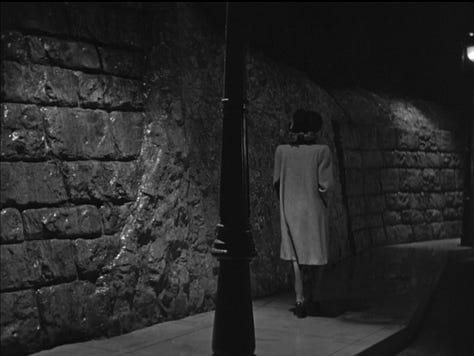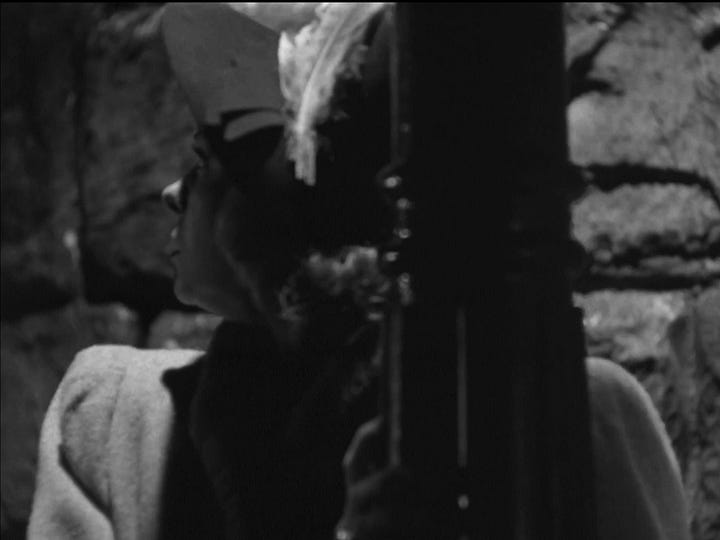Art of the Chase: Editing for Feel Over Real in CAT PEOPLE (1942)
Happy Halloween!
As a treat, let’s look at this iconic, historic (more below on how it shaped cinema forever) low-speed chase in heels!
If you’ve not seen Cat People, all you need to know is: Alice (light coat and hat) is walking home after a work meeting with Oliver. Oliver is married to Irena (dark fur coat, no hat) who is convinced not only 1. Alice and Oliver are having an affair, but 2. she, Irena, may have inherited the ability to turn into a panther.
At first those around Irena scoffed at this claim, but now, they’re not so sure . . .
Ebert notes “[Alice’s] night walk seems to pass the same short span of stone wall again and again; Tourneur edits to make it seem longer. We are aware of the visual trick, yet it evokes a dreamlike quality.”
The visual trick includes one key framing specificity: when shots are moving, the lamppost passes through frame R-L. But when a shot ‘settles’ or begins as a still, the ‘main’ lamppost starts right, then moves centre:



As the scene goes on, gradually the lamppost is established farther and farther left, which helps convince us she and we are moving forward in space and time.









Only in the last shot before the climax is the lamppost ‘still’ while Frame Right, the better for Alice to hold onto it and look backwards without anything ‘between’ her and the object of her fear. This coincides with the closest we’ve been to her all scene.


And then! The wonderful J-cut, a growling noise off-screen makes Alice turn, the shot jumps back to a wide, and . . . a bus roars into frame!
The end of this scene codified a jump-scare editing technique later called The Lewton Bus, after writer/producer Val Lewton, who would go on to use the same concept in many of his future works.
Finally, Alice asks the bus driver (and by extension us) “did you see it?” and the final shot of the scene is of the darkness amongst the waving trees, so we can try for a moment to determine whether Irena (or something else) is there or not.
Cat People isn’t about reality, it’s about fear and feeling. When we’re terrified in the dark things seem to happen quickly, yet take forever; walking from Point A to Point B feels interminable, but we’re so concentrated on making it it we don’t notice a bus until it appears - seemingly out of nowhere - to terrify us.
Getting us to feel that concentrated fear before the horror then relief is the mastery of this sequence.


